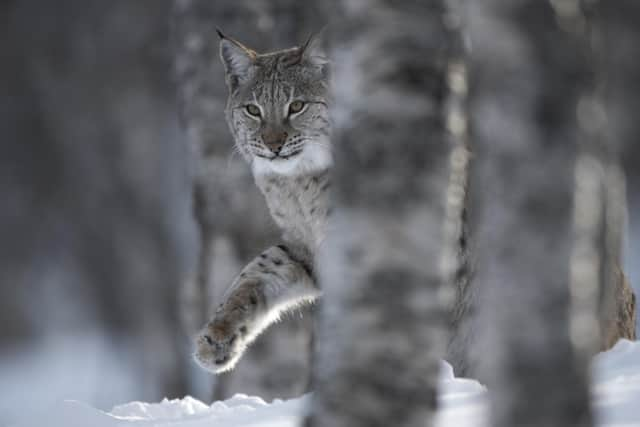Missing lynx: Could a native bobtail cat make a comeback in Scotland after 1,300 years?
A reception is being held at Holyrood to present the case for bringing back the Eurasian lynx, a medium-sized cat distinguished by its tufted ears, spotted coat and stumpy tail.
The species was native to Scotland and the UK, but has been missing since it was wiped out through hunting and habitat loss around 1,300 years ago.
Advertisement
Hide AdAdvertisement
Hide AdConservationists say reintroducing the predators could help restore nature and benefit communities by keeping down numbers of destructive deer and there is “strong public support” for such a move.
But the proposal has also sparked controversy, with some fearing the medium-sized cats could kill sheep, lambs and other livestock or even attack humans.
Now politicians, wildlife experts, rural groups, scientists, landowners and school children will be among those attending a special event which will delve into the pros and cons of reintroducing the apex predator, including insights from a year-long consultation on the proposal.
Dr David Hetherington, nature networks manager at the Cairngorms National Park Authority and author of The Lynx and Us, will argue that predators play a vital ecological role in maintaining healthy living systems and the presence of the cats, a ‘keystone species’, could have a positive influence on the behaviour, abundance and distribution of many other species.
He will highlight how lynx have successfully returned to European countries such as Germany, France and Switzerland.


The presentation has been organised by rewilding charities Scotland: The Big Picture, Trees for Life and The Lifescape Project – partners in the Lynx to Scotland initiative – and is sponsored by Ariane Burgess, Scottish Greens MSP for the Highlands and Islands.
“It’s good news that politicians and policy makers are now seriously discussing the return of lynx, which would have strong public support,” said Peter Cairns, a wildlife photographer and executive director of Scotland: The Big Picture.
“Scotland is one of the poorest places on earth for nature, and if we are serious about